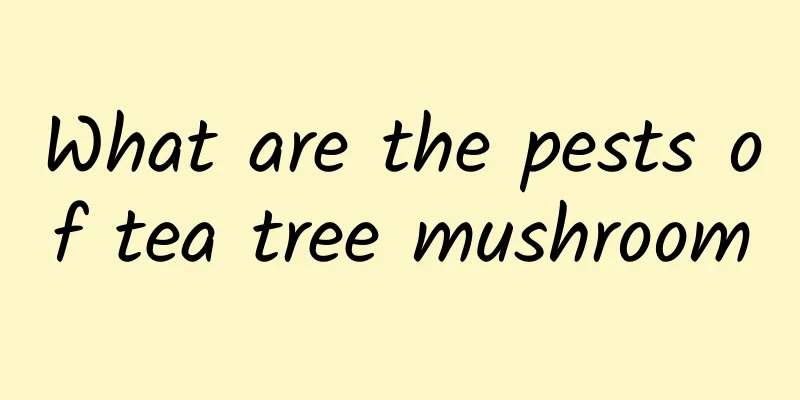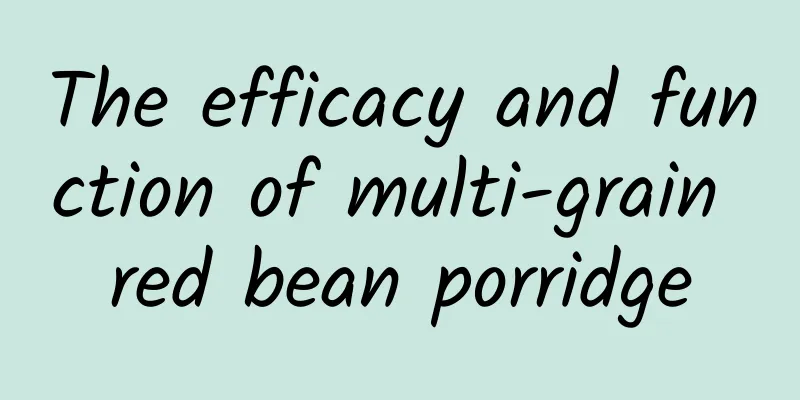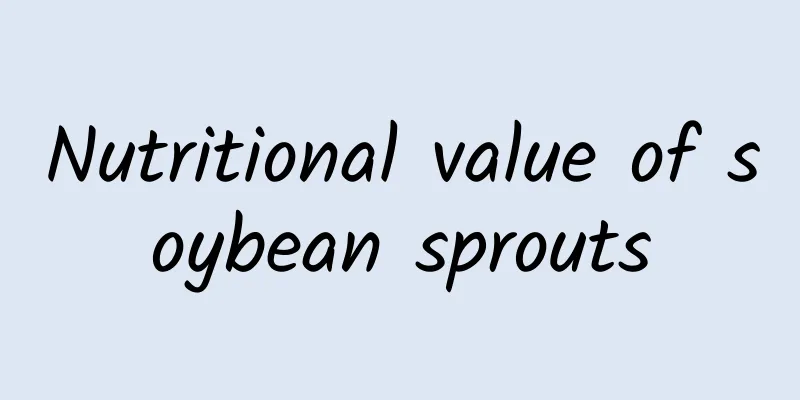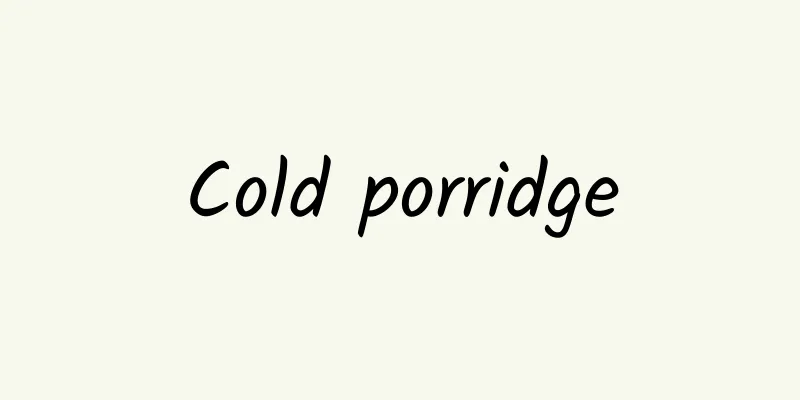What are the pests of tea tree mushroom

|
Today I will tell you about some common pests of Agrocybe aegerita and their prevention and control methods. Please take a good look at them. They are very practical: Common pests of Agrocybe edulis1. Eye fungus mosquito: The larvae have black heads, the old larvae are 4-6 mm long, and the adult body is 34 mm long and dark brown. The adult is more active and good at flying. It likes humus and has a strong tendency to light and fungus fragrance. After the bags are opened and the mushrooms are produced, the adults lay eggs on the surface of the culture medium, and the larvae hatch. The larvae drill into the fruiting bodies of the tea tree mushrooms and eat them, and gather at the base of the mushroom stalks to cause damage, causing the death of a large number of fruiting bodies, or eat the hyphae on the surface of the culture medium, making the bags unable to produce mushrooms. 2. Flea flies: The larvae are maggot-shaped, 2-4 mm long, and the adults are divided into two types, 1.1-1.8 mm long, black to dark brown, active, crawling quickly, with strong tropism to light and mushroom fragrance, light and moisture-loving, and can mate and reproduce at 10-35℃. The larvae mainly harm the culture medium, invading from the base of the mushroom buds, eating up and down inside the mushrooms, biting the tender tissues to make the mushroom body become spongy, and finally eating the mushroom buds empty. 3. Gall midges are also known as mushroom flies and mushroom flies. The larvae gather at the base of the stipes, bore into the stipes, gills, caps, etc., causing the entire mushroom body to wither or become infested with worms and of poor quality. The larvae are about 0.3 mm long, and the mature larvae are 2.7-3 mm long. They are beige and orange-red in color. They can reproduce asexually, that is, each mature larva can "live" more than 20 larvae. The live larvae are highly active and crawl quickly. The larvae like moisture and can survive in water for several days. They have difficulty moving under dry conditions. When the humidity of the culture medium is above 75%, they can "live". The adults are phototactic, and each female can lay more than 20 eggs after mating. They can reproduce and cause harm at 8-37℃. 4. Mites are mainly flour mites, which can be harmful to both adults and larvae. The surface of the mycelium becomes yellow or brown powder after being damaged, and the fruiting body becomes yellow-brown spots after being damaged, which makes the mushroom stem or mushroom cap have concave spots or deformities. The female mite is 280-350 microns long, with a smooth and shiny surface, and 320-415 microns long. It can grow and develop all year round, likes moisture and is afraid of dryness, and occurs more frequently in rainy seasons. Agrocybe agrocybe pest control methods1. Maintain good environmental hygiene and strictly disinfect the mushroom house ① Before using the mushroom house, especially the old one, weeds and debris inside and outside the house should be completely removed, and the mushroom house should be set up in a sunny place away from warehouses, livestock sheds and garbage dumps. ② Use sulfur to fumigate the mushroom house. First spray water on the inner wall, then add 10 grams/cubic meter of sulfur powder into the burning charcoal basin, close the doors and windows, and fumigate for 24 hours. ③ Potassium permanganate and formalin fumigation, the dosage is 3g/m3 and 8g/m3 respectively. Put the measured formalin into a container, place it in the center of the room, then gently add the weighed potassium permanganate, close the doors and windows, and fumigate for 24 hours. 2. Set up insect-proof doors and windows, and use lights to lure insects The mushroom house has two layers of screens, the outer layer is a rodent-proof steel mesh, and the inner layer is an 80-mesh insect-proof net. A black light is installed in the room, and a plate of waste extract is placed under the light with a few drops of dichlorvos added. The doors and windows are closed every night, and the lights are turned on for 3-4 hours to kill insects, so as to reduce the number of insects per unit space in the mushroom house. 3. Thoroughly sterilize the culture medium, strictly perform aseptic operation for inoculation, and clean up diseased and insect-infested mushrooms in time. Sterilization and inoculation must be carried out strictly according to the requirements to prevent pests and diseases from being brought into the culture medium and inoculation; check frequently and if diseased and insect-infested mushrooms are found, the diseased and insect-infested mushroom bodies and the surrounding culture medium must be removed in time, and then smeared with 5% lime water. 4. Control the temperature and humidity during each growth period The temperature requirements for each growth period of Agrocybe agrocybe are as follows: 10-16℃ for primordium differentiation and 13-25℃ for fruiting body development; when fruiting bodies are formed, ventilation should be strengthened to avoid excessive humidity, and the relative humidity should be controlled at around 85%. There should be no water droplets or water stains on the surface of the fruiting bodies. 5. Chemical control The tea tree mushroom has a slow growth rate and a long cultivation time, and is susceptible to damage by Alternaria; bacterial diseases and fungus mosquitoes are prone to occur during the fruiting stage. The uneven fruiting of tea tree mushrooms brings inconvenience to the prevention and control of fungus mosquitoes, so it is necessary to understand the insect situation, combine the fruiting dynamics, and use high-efficiency and low-toxic drugs. ①. Disease prevention and control: Bacterial diseases are common in the young mushroom stage. Regularly spreading lime powder or spraying lime powder plus bleaching powder mixture on the ground can reduce the occurrence of diseases. When the disease occurs, it should be cleaned up in time. According to the specific situation, the following agents can be selected for spraying: 70% methyl thiophanate wettable powder 1500 times, 80% dichloroisocyanuric acid wettable powder 1000 times, 10% tekodo wettable powder 1000 times, 50% carbendazim wettable powder 1000 times, 65% mancozeb wettable powder 500 times. ②. Pest control A. Repellent or poison bait: Hang cotton strips dipped in dichlorvos on doors and windows to prevent mosquitoes and flies from entering. If there are many mites, you can use a mixture of 500 grams of acetic acid, 50 grams of brown sugar and 500 grams of water, drop a few drops of dichlorvos and mix evenly, dip a strip of cloth in the mixture, hang it on the mushroom rack, take down the strip of cloth at regular intervals, soak it in boiling water to kill the insects, and soak the strip of cloth in the sweet and sour solution for repeated use, the effect is remarkable. B. Direct spraying of pesticides: If there are many insects and mites, after each mushroom harvest, use the following pesticides for spraying: 2.5% cypermethrin emulsion 2500-3000 times, 20% cypermethrin emulsion 1500-2000 times, 20% green pepsi emulsion 2000-3000 times. |
<<: Common diseases of Agrocybe aegerita
Recommend
What is white coffee? What are the benefits of white coffee for women?
Black coffee is the most common drink, but in rec...
How to cultivate Syngonium? Cultivation methods and precautions of Syngonium
Syngonium is an ornamental plant, also known as w...
Blueberry pictures and information
Blueberry is a very delicious fruit. Maybe not ma...
How is Swarovski crystal? Swarovski crystal reviews and website information
What is Swarovski Crystal? Swarovski is the world&...
The efficacy and contraindications of avocado oil
Avocado oil is a high-grade edible oil that can b...
How is the Moroccan Embassy in China? Reviews and website information of the Moroccan Embassy in China
What is the website of the Embassy of the Kingdom ...
What is Peñarol Football Club like? Peñarol Football Club reviews and website information
What is the website of Peñarol Football Club? Peña...
How to make peas delicious at home
There are many ways to cook peas. Today I saw som...
The difference between cherries and cherries
In daily life, many people regard cherries and ch...
How is overseas finance? Overseas financial reviews and website information
What is Expat Financial? Expat Financial is a well...
How to make mulberry steamed buns Tips on how to make mulberry steamed buns
Mulberries are a kind of fruit that is available ...
How is the St. Gallen Teacher Training College? St. Gallen Teacher Training College Reviews and Website Information
What is the website of St. Gallen Teacher Training...
The nutritional value of duck liver and the benefits of eating duck liver
Duck liver is the liver of poultry ducks. It is a...
How to make your own wine Tips for making your own wine
Every autumn when grapes are on the market in lar...
Fangfeng porridge
How much do you know about Fangfeng Congee? Let m...









